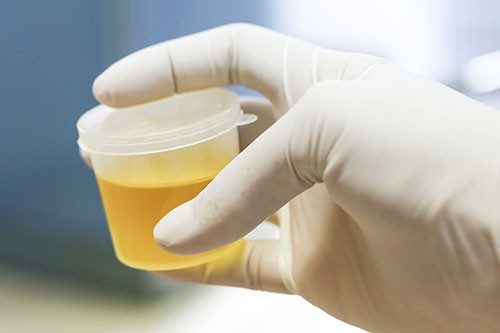FOR IMMEDIATE RELEASE | August 17, 2020
Targeting iron uptake to create a new class of antibiotics against UTIs
Note to journalists: Please report that this research will be presented at a meeting of the American Chemical Society.
A press conference on this topic will be held Wednesday, Aug. 19, at 1 p.m. Eastern time online at http://www.acs.org/fall2020pressconferences.
WASHINGTON, Aug. 17, 2020 — At 11 million cases annually, urinary tract infections (UTIs) are the most common outpatient infections in the U.S., according to the U.S. Department of Health and Human Services. At least half of all women will have a UTI during their lifetimes, and many of the infections — which have increasingly become resistant to a wide array of antibiotics — recur. Now, researchers report early progress toward developing a new class of antibiotics that would fight these infections by starving the causative bacteria of iron.
The researchers will present their results today at the American Chemical Society (ACS) Fall 2020 Virtual Meeting & Expo. ACS is holding the meeting through Thursday. It features more than 6,000 presentations on a wide range of science topics.
“You can’t stop bacteria from evolving and developing resistance to antibiotics,” says Mary Rose Ronquillo, an undergraduate student who works in the lab of Scott C. Eagon, Ph.D. “The aim of our research is to develop a drug that acts in a different way from current drugs — by depriving the bacteria of iron, a key nutrient essential to their survival.”
Currently, most drugs that treat UTIs caused by uropathogenic E. coli (UPEC) either disrupt synthesis of the bacterial cell wall or interfere with bacterial DNA replication. Since the urinary tract is an iron-deficient environment, UPEC have evolved several ways to obtain iron, such as by producing molecules called siderophores that sop up iron bound to host proteins.
The researchers, who are at California Polytechnic State University, have collaborated on this project with other scientists at the University of Michigan School of Medicine. The collaborators previously showed that the iron acquisition process can be a target for small molecules for possible UTI treatment. In that study, they screened nearly 150,000 compounds and identified 16 that stop these bacteria from growing under iron-limiting conditions. Of these 16, two compounds were linked to disruption of the bacterial TonB system, which consists of three transmembrane proteins that help UPEC take up iron. Eagon’s group is focusing on these two compounds for further study.
“We selected one of these compounds as a scaffold to modify into potential small molecule inhibitors of the TonB system,” M. Cole Detels, an undergraduate student in Eagon’s lab, explains. The molecule is called 2-{[(3-chloro-4-methoxyphenyl)amino]methyl}quinolin-8-ol, or more simply, the “hydroxyquinoline scaffold.”
After they made the scaffold molecule, Detels and Ronquillo prepared five variations, and another three are now in the purification stage. “While the synthesis of the potential drugs is relatively straightforward, purifying them from the soup of other chemicals used in their preparation has been challenging,” Detels says.
The team says that the goal is to prepare a library of inhibitors in which the hydroxyquinoline scaffold is modified with various functional groups. “With this library in hand, we will work with our collaborators to screen them against UPEC and human cell lines to look for broad toxicity,” Eagon says. “After that, the compounds will be tested in animal models to see if they kill the bacteria in vivo.” Once Eagon’s team finishes preparing the complete hydroxyquinoline library, they plan to make variations of the second scaffold molecule.
Because they target iron uptake, this new class of drugs is expected to have no effect on beneficial E. coli strains in other regions of the body. Iron is plentiful in the body in non-urinary tract locations, so hindering iron uptake shouldn’t cause a problem for these bacteria. Most current antibiotics, however, wipe out all strains, including beneficial gut flora. And because there is no TonB homolog found in humans, the possibility of toxic side effects would also be reduced compared to other antibiotics.
The researchers acknowledge support and funding from the Frost Fund and the National Science Foundation.
The American Chemical Society (ACS) is a nonprofit organization chartered by the U.S. Congress. ACS’ mission is to advance the broader chemistry enterprise and its practitioners for the benefit of Earth and its people. The Society is a global leader in providing access to chemistry-related information and research through its multiple research solutions, peer-reviewed journals, scientific conferences, eBooks and weekly news periodical Chemical & Engineering News. ACS journals are among the most cited, most trusted and most read within the scientific literature; however, ACS itself does not conduct chemical research. As a specialist in scientific information solutions (including SciFinder® and STN®), its CAS division powers global research, discovery and innovation. ACS’ main offices are in Washington, D.C., and Columbus, Ohio.
Media Contact
ACS Newsroom
newsroom@acs.org






